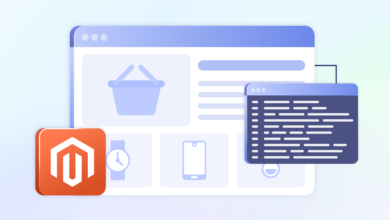How to Develop a Fintech App in 2024: A Step-by-Step Guide

In recent years, fintech mobile app development has gained immense popularity due to its potential to revolutionize the financial sector. The year 2024 brings new opportunities and challenges for businesses seeking to enter this market. With the integration of advanced technologies like artificial intelligence, blockchain, and enhanced security features, developing a fintech app has become more complex yet highly rewarding.
In this article, we will guide you through the essential steps for developing a fintech app in 2024, focusing on the latest trends, tools, and best practices.
1. Understanding the Market Demand for Fintech Apps in 2024
Before you dive into the development process, it’s crucial to understand the growing demand for fintech solutions. Financial services are evolving, with consumers expecting more accessible, secure, and efficient platforms for managing their money. According to recent studies, the global fintech market is expected to reach $332.5 billion by 2028, with mobile fintech apps leading the charge.
The types of fintech apps seeing high demand include:
- Digital Banking Apps
- Investment and Trading Apps
- Loan Lending Platforms
- Digital Wallets
- Insurance Apps
- Cryptocurrency Exchange Apps
Identifying the niche that aligns with your business goals is the first step toward successful fintech mobile app development.
2. Define the Core Features of Your Fintech App
A fintech app must serve a clear purpose while delivering a seamless user experience. The core features of fintech apps in 2024 include:
- User Registration and Authentication: Implementing secure sign-up methods with two-factor authentication (2FA), biometrics, or OAuth (Open Authorization) is crucial to ensure user safety.
- Account Management: Users should be able to view and manage their accounts, track transactions, and set up notifications easily.
- Money Transfers and Payments: This is the backbone of many fintech apps. Instant money transfers, bill payments, and peer-to-peer (P2P) payments are expected features.
- Security Features: Data encryption, fraud detection, and biometric security protocols (face or fingerprint recognition) are critical components in today’s fintech landscape.
- Notifications and Alerts: Real-time alerts about transactions, promotions, or suspicious activities enhance user engagement and security.
- Budgeting Tools and Insights: Many fintech apps offer budgeting and financial planning tools to help users manage their spending effectively.
By defining these features upfront, you ensure that your fintech mobile app development project aligns with market expectations and customer needs.
3. Choose the Right Tech Stack
Selecting the right technology stack is one of the most critical aspects of fintech mobile app development. The following are some of the core technologies you should consider in 2024:
- Frontend Development: Flutter, React Native, and Swift are popular choices for building mobile applications. These frameworks ensure that your app works seamlessly on both iOS and Android.
- Backend Development: For the backend, Node.js, Python (Django), or Ruby on Rails provide the scalability and performance needed for handling financial transactions.
- Database Management: Use databases like PostgreSQL or MongoDB that offer high levels of security and scalability, ensuring smooth operations even during high traffic.
- Security Protocols: SSL/TLS encryption, AES (Advanced Encryption Standard), and OAuth 2.0 are essential for securing user data.
- APIs and Integrations: Modern fintech apps often integrate with third-party services, such as payment gateways (Stripe, PayPal), investment platforms, or blockchain networks. These APIs streamline operations and improve user experience.
By choosing a robust tech stack, you lay a solid foundation for a secure, scalable, and efficient app.
4. Ensure Compliance with Regulatory Requirements
Fintech is a highly regulated industry, and failing to adhere to compliance requirements can result in severe penalties or app shutdowns. As part of the fintech mobile app development process in 2024, ensure that your app complies with the following regulations:
- General Data Protection Regulation (GDPR): For European users, your app must comply with GDPR rules that govern user data protection and privacy.
- Know Your Customer (KYC) & Anti-Money Laundering (AML): Your fintech app should include KYC procedures to verify user identities and prevent fraudulent activities. AML regulations are also crucial to prevent financial crimes.
- Payment Card Industry Data Security Standard (PCI DSS): If your app handles credit card transactions, compliance with PCI DSS is mandatory to ensure secure payment processing.
- Local Regulations: Depending on the region, fintech apps may need to comply with additional local financial regulations. Collaborating with legal consultants early in the process is advised to stay compliant.
Regulatory compliance not only ensures the smooth operation of your app but also builds trust with your users.
5. Focus on User Experience (UX) and User Interface (UI) Design
In 2024, fintech apps must provide an exceptional user experience to stand out in a competitive market. The app should be intuitive, user-friendly, and visually appealing. Here are some design tips for fintech mobile app development:
- Simplicity: A minimalist interface with easy navigation is crucial for reducing friction in financial transactions.
- Personalization: Incorporating AI-driven personalization features, such as customized dashboards or tailored financial advice, enhances the user experience.
- Accessibility: Ensure your app is accessible to all users, including those with disabilities. Features like voice commands, larger text options, and high-contrast modes can make your app more inclusive.
- Consistent Branding: Maintaining consistent brand colors, fonts, and tone across the app strengthens brand identity and improves user trust.
By investing in UX/UI design, you increase user satisfaction and retention rates, which are key to the success of any fintech app.
6. Security is Paramount
Security breaches can devastate a fintech app’s reputation. In 2024, fintech mobile app development must prioritize advanced security measures. Here are key security features:
- Multi-Factor Authentication (MFA): Implementing MFA ensures that users’ accounts are secure even if passwords are compromised.
- End-to-End Encryption: Encrypt all data transfers between the user and the app, ensuring sensitive information is not exposed to malicious actors.
- Biometric Authentication: Face and fingerprint recognition add another layer of security, providing users with quick and secure access.
- Real-Time Fraud Detection: Leveraging AI and machine learning, modern fintech apps should incorporate real-time fraud detection systems to monitor suspicious activities.
By integrating these security features, you can safeguard user data and ensure regulatory compliance.
7. Testing and Quality Assurance
No fintech app should go live without thorough testing. Testing ensures that the app is free from bugs, security loopholes, and performance issues. There are several types of testing to focus on:
- Unit Testing: Tests individual components to ensure each feature works as intended.
- Integration Testing: Ensures that APIs, databases, and external systems work seamlessly with your app.
- Security Testing: Identifies vulnerabilities and ensures the app complies with all security standards.
- User Acceptance Testing (UAT): Involves real users to identify usability issues before the app’s launch.
A strong quality assurance process guarantees that your app delivers a seamless experience and functions reliably under pressure.
8. Post-Launch Support and Maintenance
Once your fintech app is live, the journey doesn’t end. Continuous updates, bug fixes, and feature upgrades are essential for keeping your app relevant in 2024’s fast-paced fintech market.
- Monitor User Feedback: Collect user feedback to understand issues and areas for improvement.
- Release Regular Updates: Roll out regular updates to enhance features, improve security, and address bugs.
- Scalability: Ensure that your app can scale as your user base grows. Regular performance optimizations can prevent slowdowns and crashes.
Conclusion
Fintech mobile app development in 2024 offers immense opportunities, but success requires meticulous planning, adherence to regulations, and a focus on security and user experience. By following the steps outlined above, you can develop a cutting-edge fintech app that meets market demands and stands the test of time.
Remember, partnering with a reliable development team and staying updated on industry trends will help you create a fintech app that not only meets user expectations but also drives innovation in the financial sector.



